| < Prev | Next > |
|---|
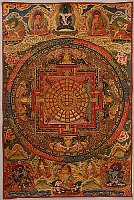 Tibetan thangka painting is not really a creative, artistic process in the sense of Western artists. Thangka painting follows old iconographic patterns that are defined in detail in old books. A thangka is a spiritual and religious visualization aid. And the artistic freedom of the thangka painter was limited to such details like the background landscape and some color variations.
Tibetan thangka painting is not really a creative, artistic process in the sense of Western artists. Thangka painting follows old iconographic patterns that are defined in detail in old books. A thangka is a spiritual and religious visualization aid. And the artistic freedom of the thangka painter was limited to such details like the background landscape and some color variations.
Classification of Thangkas
This article tries to classify Tibetan thangkas by typical themes.
Mandalas
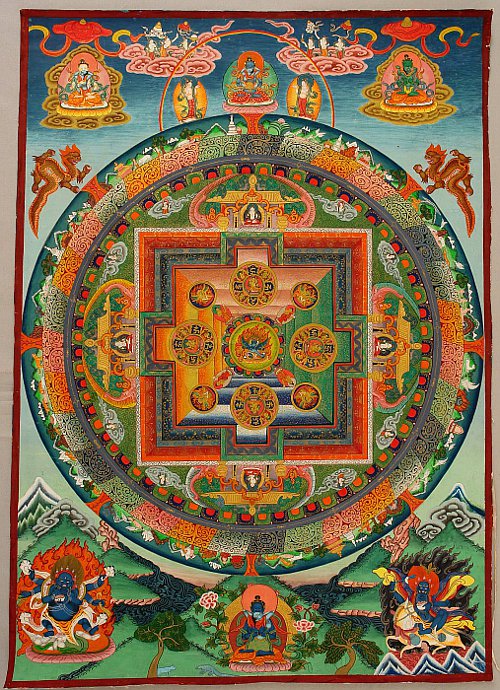
A mandala thangka follows a cosmic, geometric pattern of circles and squares. The outer square form has four gates. Especially in Tibetan Buddhism mandalas are used as meditation aids. The Mandala form is also to be found in the architectural outlines of stupas.
Mandalas are also used by Hindus.
In the center of the mandala thangka is always an image of a Buddha, a peaceful or a wrathful deity. Well made mandala thangkas are especially rewarding for collectors under artistic aspects because of the detailed and intricate painting.
Buddha Life
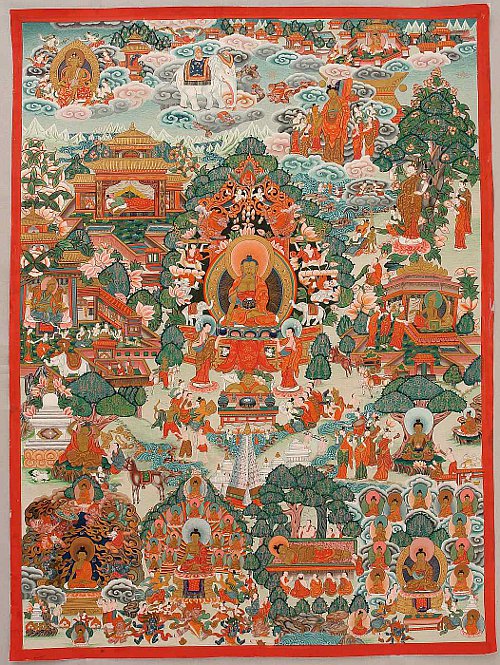
A 'Buddha Life Thangka' is simply the story of the historical Buddha Shakyamuni from the moment when his mother, an Indian queen, conceived him in her dream by a white elephant touching her right hip, until the time when Buddha passed away from this earth and entered nirvana. The rough structure of Buddha life thangkas is always very similar. But I have never seen two identical ones, not even in the drawing.
Wheel of Life
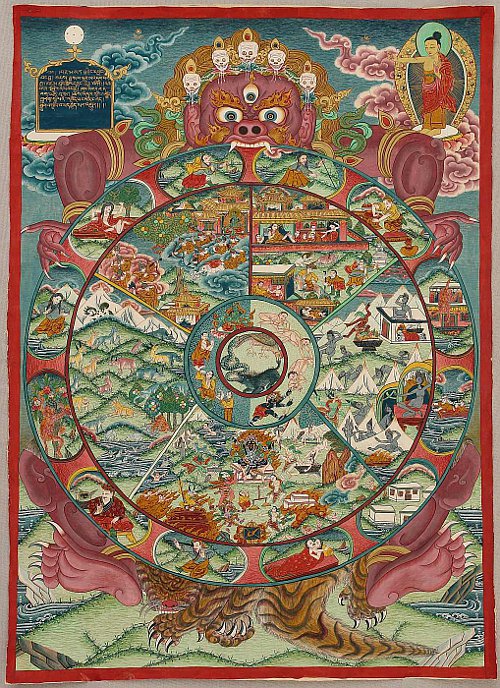
The 'Wheel of Life' or 'Wheel of Existence' is another frequently seen motif in Tibetan thangka painting. Western tourist are usually terrified when seeing this subject for the first time. A dreadful monster is holding a wheel in his claws. The wheel has a number of smaller circles and is divided into 5 or 6 different realms. They represent the different forms of reincarnation, from pretty acceptable on top to gruesome on bottom. The wheel of life is a kind of visual wrap-up of the the principles of Buddhism.
Buddhas and Peaceful Deities
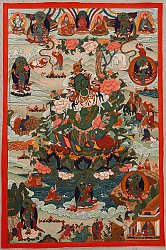 Let's come to the more pleasing thangka subjects. Images of Buddhas and other friendly looking deities like the benevolent Taras, mostly the green and the white Tara. They are practically always shown in the center, either sitting on a lotus throne or standing. There is a huge variety of different Buddhas and other deities. On this website you find a growing number of easy to read articles in which I try to explain the major characters from the Buddhist pantheon so that you will be able to recognize at least the more common ones.
Let's come to the more pleasing thangka subjects. Images of Buddhas and other friendly looking deities like the benevolent Taras, mostly the green and the white Tara. They are practically always shown in the center, either sitting on a lotus throne or standing. There is a huge variety of different Buddhas and other deities. On this website you find a growing number of easy to read articles in which I try to explain the major characters from the Buddhist pantheon so that you will be able to recognize at least the more common ones.
Wrathful Deities
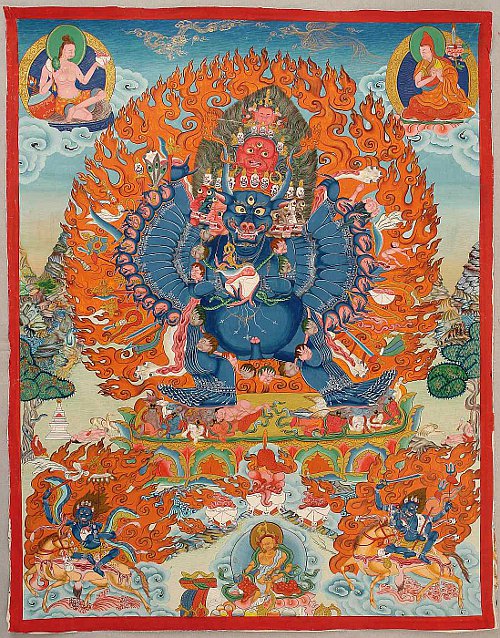
Thangkas with wrathful deities look like having been designed for horror video games. Westerners are bewildered when seeing an image of Mahakala, Yamantaka or Bairav. Often these images have some sexual references. Details are gruesome like human skulls lined up on a belt.
The origins of these picturesque but wild guys goes presumably back to the old Bön religion that was predominant in Tibet before Buddhism was introduced in Tibet. The Bön religion was a shamanistic religion based on the belief in demons, spirits, black magic and the forth. When Buddhist missionaries like the historic Padmasambhava introduced Buddhism in Tibet, they tried to ease the transition by integrating the old demons into the new religion by declaring them as protectors of the new belief.
Contemplative Thangkas
Thangkas with contemplative subjects are rather rare, and also the expression 'contemplative' is seldom used. I heard it for the first time from a thangka seller in Patan and liked the expression. With 'contemplative' he described all thangkas that have no geometric/symmetric design, but rather told a story from the world of Buddhism or Hinduism. The landscape element is more important in this type of thangkas than in any others. Not well explained, I am afraid. But take a look at the example and you will know what I mean.
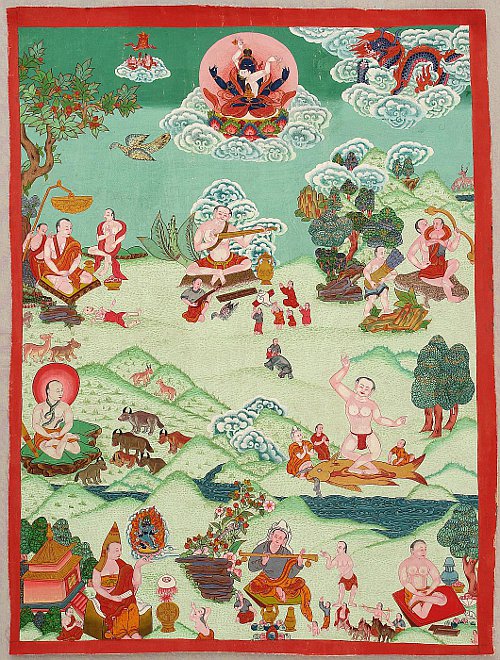
Dieter Wanczura, June 2010.







